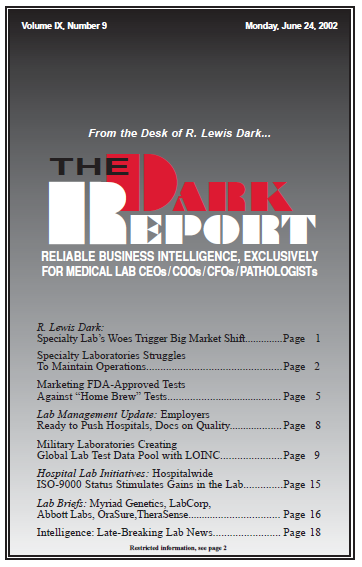DIRECT-TO-CONSUMER ADS FROM MYRIAD GENETICS TO START THIS FALL FOLLOWING THE EXAMPLE of the pharmaceutical industry in using direct-to consumer advertising to build drug sales, Myriad Genetics, Inc. is about to launch an advertising campaign for its predictive genetics tests. Beginning this fall, consumers in Denver and Atlanta will see a television, print, and radio …
Myriad Genetics, LabCorp, Abbott Labs, OraSure,TheraSense Read More »
To access this post, you must purchase The Dark Report.


